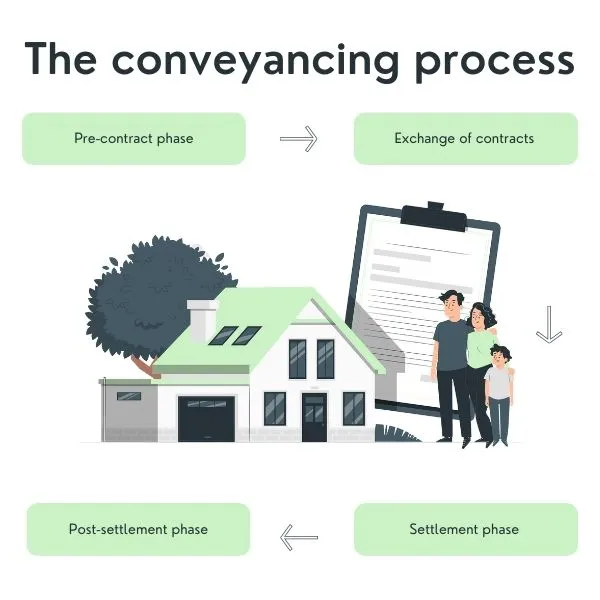Conveyancing is a crucial part of property transactions that isn’t talked about nearly enough. Understanding the legal aspects of property transfer conveyancing can save you valuable time, money, and effort when you purchase, sell, refinance, or subdivide a property. However, the legal requirements and fine print of property transfers can be overwhelming and difficult to comprehend — and that’s where we come in. Entry Conveyancing is here to break down the complicated process of property transfer with our simple and helpful Conveyancing 101 guide.
What is conveyancing?
Conveyancing is a critical aspect of property transactions, whether it be buying, selling, refinancing, or subdividing. No matter the transaction, the legal process of transferring property ownership from one person to another is essential — and the role of conveyancing is paramount.
Types of property transactions
Conveyancing is relevant for the correct property transfer in transactions such as:
- Buying or selling a residential, commercial, or industrial property.
- Refinancing a property to secure better mortgage terms, consolidate debt, or make home improvements.
- Subdividing a property to create multiple lots from a single land package or develop land for new construction.
The conveyancing process
The legal process of property transfer consists of several key steps, each of which is vital and plays an essential role in making the transfer of property ownership as smooth as possible. These are the four critical phases in any property transfer:
1. Pre-contract phase
The pre-contract phase is the time for property research, which includes:
- Title searches
- Property valuations
- Identification of issues and restrictions
In this phase, conveyancers help the buyer or seller to prepare and negotiate contracts. This step involves the contract of sale, the vendor’s statement (also known as section 32), and any relevant special conditions. The conveyancer also uses this phase to conduct pre-purchase building inspections, pest inspections, and land surveys.
2. Exchange of contracts
The buyer and seller will then exchange contracts. Important things to note in every agreement are the obligations of both buyer and seller, the payment to be made as a deposit, and the settlement date. After this exchange comes a cooling-off period, during which both buyer and seller can legally withdraw from the agreement.
3. Settlement phase
In this phase, a conveyancer will assist in completing pre-settlement checks and documentation. These can include mortgage documents and transfer of land documents. This is the time to ensure there are no outstanding issues before settlement, which is organised between you, the seller, your conveyancer, and all involved parties. Settlement day involves managing bank cheques, key handover, and official property possession. These are all planned during this period, as is the transfer of funds, which includes the mortgage discharge, the settlement statement, and the payment of fees and taxes.
4. Post-settlement phase
Conveyancing doesn’t end after settlement — it is post-settlement when the property transfer is completed by lodging the transfer of land document to register the new owner. All relevant documents will be lodged with local councils and land tiles offices. Any appropriate utilities are organised, whether it be electricity, gas, water, or council rates.
So, what services do conveyancers provide?
Conveyancers are trained and licensed in property law to handle the legal aspects of property transfer. Conveyancing services include:
- Legal advice related to the property transfer and identification of potential risks.
- Preparation and review of documents and contracts.
- Liaising with lenders, mortgage brokers, real estate agents, solicitors, and other parties.
- Settlement coordination, including scheduling the settlement day, handling funds, and ensuring all obligations are fulfilled on both ends.
- Protection of client’s interests and general legal guidance.
The cost of conveyancing depends on the complexity of the transaction and the services provided. Whether you’re buying property or selling property, there is no one-size-fits-all cost to conveyancing. How much you spend depends on your location, the type of property you’re looking for, and the experience and reputation of your conveyancer. Rest assured, though — every dollar you spend is worth it, as a professional conveyancer will ensure that your property transfer is smooth and worry-free and that all legal obligations are fulfilled.
Choose Entry Conveyancing for your property transfer needs
There’s no getting around it — there are a lot of legal requirements associated with property transfer conveyancing, whether you’re buying or selling property. But with an expert conveyancer, your property transaction will go off without a hitch. Choose Entry Conveyancing for comprehensive services with all property transactions in Melbourne, Sydney, Brisbane, and more locations across Australia. Rest assured knowing that your property transfer is in good hands. Our tailored solutions will make the conveyancing process stress-free. Reach out today for a free quote and discover affordable and expert conveyancing services for your next property transaction.






